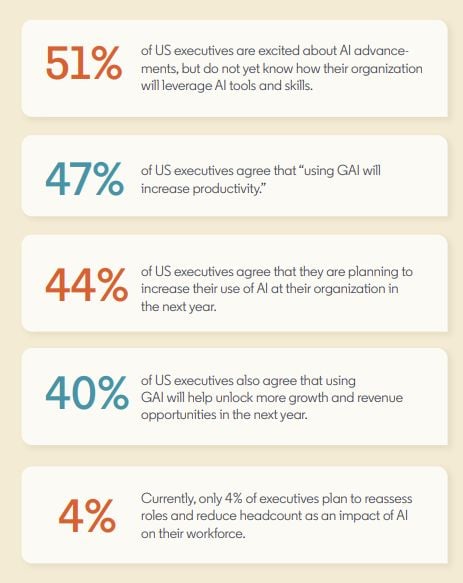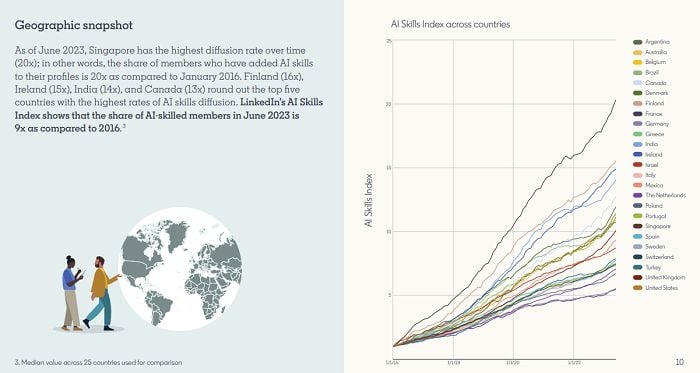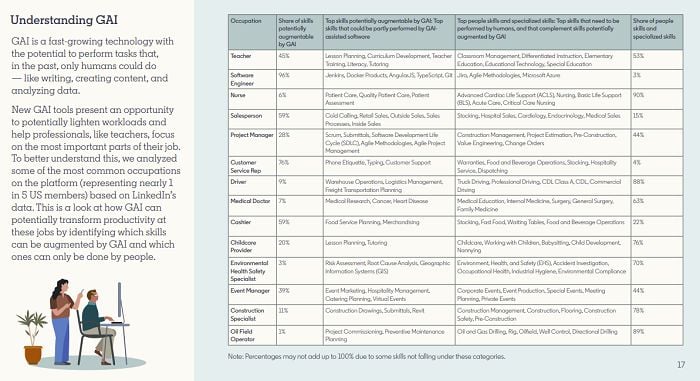How is the evolution of generative AI impacting various professions, and what should you be considering to maximize your own skills in the evolving AI field?
These are some of the elements that LinkedIn’s looking to dig into with its new “AI at Work” report, which looks at key AI trends, based on LinkedIn data, to pinpoint key shifts.
You can download the full 30-page report here, which LinkedIn says is the first in what will be a quarterly series, but in this post, we’ll take a look at some of the key notes.
First off, LinkedIn provides a general overview of the latest workforce shifts as a result of AI development.
As per the report:
“Not only are job postings increasing, but we’re seeing more LinkedIn members around the globe adding AI skills to their profiles than ever before. We’ve seen a 21x increase in the share of global English-language job postings that mention new AI technologies such as GPT or ChatGPT since November 2022. In June 2023, the number of AI-skilled members was 9x larger than in January 2016, globally.”
The report also says that 47% of US executives believe that using generative AI will increase productivity. Which is a scary concept in some ways, in that it likely points to businesses seeking to use AI tools to reduce their reliance on human labor. But at the same time, generative AI tools are mostly assistive, and they require direct human input to maximize their value, and ensure accuracy.
So you probably won’t be losing your job to AI just yet.
But then again…

As you can see in this overview, only a fraction of US executives plan to cut roles as a result of broader AI adoption, though most also don’t exactly know what the full implications of AI will be for their organization as yet. It’ll take time for this to develop, as people find new ways to implement these tools, and as the tools themselves continue to advance, but these stats reflect the current state, where such processes can help to increase efficiency, but aren’t complete alternatives as such.
The report also looks at where AI skills are on the rise, based on LinkedIn profile updates, as well as the industries that are seeing more AI adaptation.

The report also looks at the top roles likely to be impacted by the expanded adoption of generative AI (GAI), and how it can assist in each.

Again, the report underlines that generative AI tools are not able to replace these roles wholesale, but they could provide assistance, in a range of ways, which could make professionals in these positions more efficient.
It’s an interesting overview of the state of AI adoption, based on how people are listing such skills on their LinkedIn profile, which points to new opportunities for learning and development, in a range of fields.
It could be worth staying in touch with these shifts, and considering how these findings relate to your day-to-day approach.
You can download LinkedIn’s full “Future of Work Report: AI at Work” report here.



